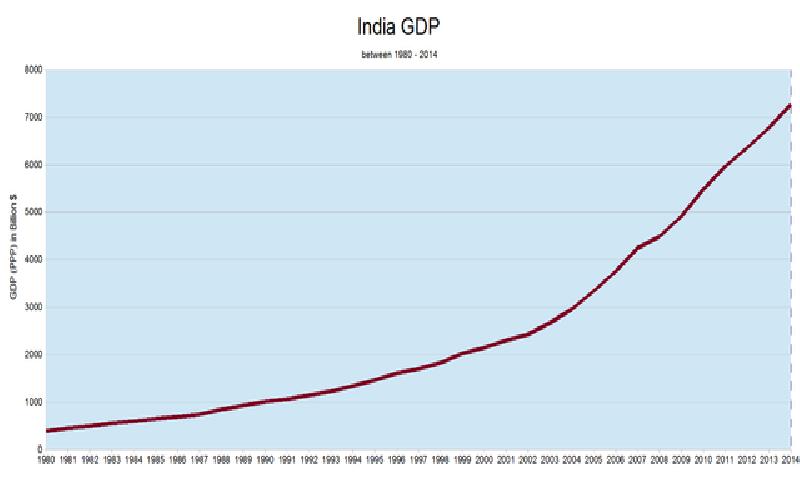Was Economic Liberalization a reason behind unemployment in india?


Twenty five years back, when the Narasimha Rao Government was introducing economic liberalization in India, it received little support from either the civil society or the media. Its worst criticism came from the Industries who had enjoyed the fruits of protection and monopoly since independence. Today, the only argument that remains is unemployment. Did liberalization increase unemployment in India?
The Economic Liberalization introduced in 1991 by the Government may not have been able to solve the challenge of high unemployment, especially of unskilled persons, but it would be as big a folly as ever could be, to say that liberalization reforms contributed in any way to unemployment, or that they had any adverse impact on creation of jobs.
While liberalisation arrived on the Indian stage only in 1990s, unemployment in India has not only existed but had been rampant and growing dangerously since the beginning of twentieth century. During the last hundred years or so, the situation improved at times, while at other times it worsened, the worst situation being in the 1970s when the oil shocks devastated the economy, while exploding population added millions to the workforce.
The main factor behind unemployment in India is a high rate of population growth that exceeds the growth of jobs. Almost two third of Indian workforce is employed in agriculture which contributes only about a third of GDP. This is largely a legacy of agrarian economy of the past. For thousands of years, the population has been more or less static, and there was sufficient opportunity for every worker to earn his livelihood by working in agriculture.
Then, after 1919 – also referred as the ‘year of the great demographic divide’, the population started growing at a high rate because of the improved medical facilities. The rising workforce could not be accommodated in the limited land available, and soon there were more workers than what could be fed by earning from land.
During the same time, the world went at war, and the economies crashed.
In India, as independence movement also took off, the growth of industrialization was limited. Same situation continued even after independence. The growing workforce could never get fully accommodated in agriculture, so the surplus labor migrated to cities. But even there, the jobs were less than those seeking them, leading to fall in wages to subsistence level. The creation of new jobs by way of industrialization never kept pace with the rise in workforce.
Notably, an important phenomenon that no statistical figures actually catch is the gross underemployment that also exists side by side, particularly in rural areas, where families living at the same place since ages are reluctant to move out, and instead prefer to survive on whatever irregular employment and income they are able to garner in the village itself. Most such people fall somewhere between the definitions of ‘unemployed’ and ‘unemployed.’
In 1991, India opted for liberalizing the controls and regulations that had been preventing the growth of entrepreneurship and which were responsible for slow economic growth. Since agriculture was already saturated, new growth could come only in manufacturing and services. The economic rules and regulations were relaxed to make it feasible for a person to indulge in business or trading. Business transactions with outside world were also allowed, and flow of foreign direct investment as well as investment by foreign investors in securities and equity of domestic companies was also encouraged.
Liberalization was a basic change in direction that has gradually helped in economic growth to rise from 4-5% per annum to 8-9% per annum during the last ten years. Thanks to it, the demand for skilled workers in the private sector has grown substantially and resulted in massive rise in their wages.
However, even though the demand of unskilled labor has risen, it has still been less than what would be required to solve the problem of unemployment. However, one needs to remember that during the last one and a half decade, India has seen significant urbanization, and a substantial rural to urban migration of unskilled workers. This resulted in a supply of labor that was higher than the creation of jobs for unskilled labor.
Wages for skilled and unskilled labor have seen unprecedented rise since liberalization, primarily indicating the rise of demand for such workers due to economic and industrial growth. Unemployment continues to exist, but underemployment has reduced substantially as rising incomes has improved income for small scale self-employed workers.
Liberalization may not have been able to provide a job to every unemployed person, but the reason for that largely pertains to high illiteracy and inadequate vocational education available. Liberalization can only create opportunities, but to avail them, the target population needs to be trained and educated in areas where employment is being created. It is there that India seems to have missed out.
Improving employment situation further will require improved capacity building. In fact, even today, there are still many regulatory obstacles and outdated controlling mechanisms that are gradually being removed to allow further growth of entrepreneurships, self-employment and creation of employment opportunities.
Manpower planning is an important process in any organization. It is all about determining the requirements and the way to achieve them.
Financial analysis can be performed by employing a number of tools and techniques. In this article we will discuss some of the important tools and techniques of financial analysis. .
Ethics involve an employee's moral judgement about right or wrong. Business ethics involve dealing with all the stakeholders in an ethical manner.